The following story was recorded in 1994, from Bill Henderson's book "Escape From The Sea".
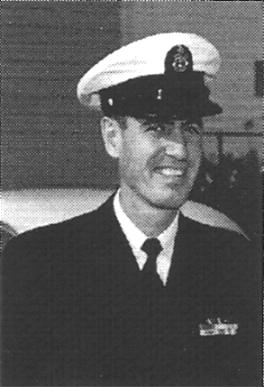
|
The Life and Times of Bill Bunker
I was born in cold North Dakota in 1920. I lost parents in 1927 and lived several places as I was growing up; my Grandmother, Boys Town in Omaha, Nebraska, and the State School for boys. While growing up I worked in North Dakota as a Bell Hop and in an all night cafe as waiter. I decided to go west and came to California in 1937.
I had to support myself so while finishing school I worked as pin-setter in a bowling alley, in a gas station, a machine shop and a movie theater. After I graduated I went to work for Ryan Aircraft in San Diego in the final assembly section building Ryan ST's for the military in 1941. I enlisted in the NAVY to become an Aviation Machinist Mare. I was assigned to the USS Helena CL50 and was told I was a YEOMAN Stricker. My battle station as a phone talker was on the bridge with the Captain, Gunnery Officers and Communications. When the ship was sunk on 6 July 1943, in Kula Bay, I went overboard and was picked up by USS Radford (DD 446).
I trained Reserves in Las Vegas, NV and Pasadena, CA. My last duty station was with Headquarters at the 11th NAVAL District San Diego, CA.
My other duties included SCTC, Miami, FL and serving aboard ASW type ships until end of war. I retired in 1962 as a Senior Chief.
I stepped down as President of USS HELENA ORGANIZATION after FORTY YEARS.
Due to the sinking of the CL50 I am a lifetime member of the "KULA GULF SWIM CLUB". |
The following copied from
"Guadalcanal Echoes"
August - September 1999 edition
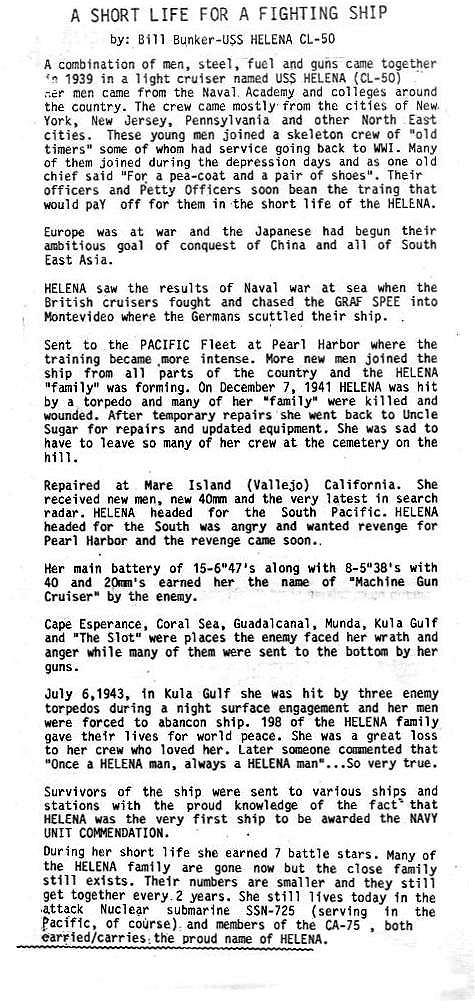
Bill Bunker
Yeoman Second Class
The Final Fight At Kula Gulf
The night of the sinking Bill Bunker, the Executive Officer's yeoman was on the fighting bridge with Captain Cecil. There were others but the main players were the Captain and his two gunnery officers. Here are Bill's recollections of the final battle.
Commander Rodman Smith had the six inch battery under his command and Lt. Cdr. Jack Chew had control of the five inch guns. They and the Captain directed the battle. The Captain decided when and what enemy targets were to come under the withering fire of the Helena's guns. Smith and Chew gave the orders to pull the triggers.
During the battle my job was to man one of the JX telephone circuits and to transmit messages from Communication Officer, Lt. Mike Tyng but no orders or information were issued; since the bridge concentrated on keeping the ship alive while inflicting deadly damage on the enemy. The battle was so intense and over so quickly there was no time for anything else.
I did however try to keep the fellows connected to my circuit informed. Before the battle started I let them know what I heard being discussed by the Captain, the gunnery officers, and the navigator.
I relayed information the radar picked up regarding the number of enemy ships, their speed and distance but when the shooting started the roar of the guns made it impossible for me to be heard.
I could see our shells heading for the enemy formation and splashes of their return fire but there was no need to report this. The men down below and in the confined spaces throughout the ship had been through it before and knew what was happening.
When the first torpedo blew off the bow the combined force of the ship's speed and the lack of a pointed bow caused the sea to cascade over the forecastle like snow from a snowplow. Water poured over the forward turrets, the navigation bridge, and up over the fighting bridge in a deluge beyond belief.
Commander Cook, the engineering officer, later reported that he'd noticed an immediate drop in steam pressure to the engines, and because of possible damage to the hull, thought the Captain would order a reduction in speed. Receiving no such order he directed his men to maintain the twenty five knot speed.
But it made no difference now. The second and third torpedoes had exploded against the Helena. With engine power lost, the ship was dead in the water, and most of the communications lines were severed.
When the Captain decided the ship could not be saved and ordered "abandon ship" I didn't hear him. I was too busy calling the men on my circuit, trying to find out how they were and what reports they wanted to relay to the bridge.
I finally made contact with Chief Bosum Mate Walters who was just below me on the navigation bridge. He was okay but had not received the word to abandon. I told him the Captain and the others had left the fighting bridge and that I was leaving but could not inform any of the other stations since all lines were dead. There was nothing left for me to do but remove my headphones and head for my "abandon ship" station at number one turret.
In the darkness I groped my way down to the main deck and went forward on the starboard side. When I arrived at turret number two something was terribly wrong. The bow and number one turret were missing! Until then I had no idea they were blown off. Now I needed an alternate place to abandon ship but wanted to find a life raft before going into the water.
I went aft along the port side and in the darkness was lucky to spot a raft about twenty five feet away from the ship. I was wearing my flash proof clothing, helmet, and rainwear, plus all my regular clothing and shoes. With all that weight I realized my kapok life jacket wouldn't keep me afloat, so I removed everything but may shirt, dungarees and shoes. I sailor standing beside me who said he couldn't swim was also wearing too much extra gear. I told him to remove it or his life jacket wouldn't hold him up, and went over the side. I don't know who he was or what happened to him.
I swam out to the raft but there were so many men in it I had to hang on outside. It was difficult to judge but I was probably in the water about four hours before the Radford picked me up. While I was crawling up the cargo net someone on deck reached down, grabbed me by my belt and hauled me aboard.
The Radford quit shooting, and was well on its way down the slot to Tulagi.
I was one of thirteen yeoman on board and each of us had a special responsibility. Whenever the ship left harbor a muster list was prepared showing the name, rank and serial number of all personnel. The original was left ashore with the naval authorities, that in the event of a disaster they would know who had been aboard.
A copy was given to each yeoman. This wide distribution increased the chances that at least one list would survive, permitting an immediate accounting of the crew after a battle. To waterproof the lists they were put in a condom attached to the collars of our life jackets. The yeoman gave no special significance to the use of condoms in this manner but there were several wiseacres on the ship who said the yeoman didn't know what they were for anyway.
Bill was born in Oakes, North Dakota in 1920, enlisted the Navy in November 1941, retiring 21 years later.
Bill's post WWII assignments were: SCTC Miami; USS PC 801; USNRTC Las Vegas, Nevada; USNRTC, Pasadena, CA as leading CPO. Acting as X.O., 11th Naval District as Assistant Naval Reserve Recruiting Officer and ROC Administrator for three (3) states. Retired in year 1962 as Senior Chief Yeoman with 21 years service.
The next 25 years he spent in the Automobile business and has served 25 years as President of the USS Helena organization.
To see a recent picture of Bill, click Here.
The following are Bill's WWII awards and his National Defense Medal.

Navy Unit Commendation

Good Conduct Medal
With 5 Stars
|
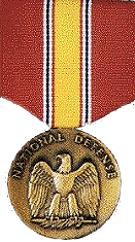
National Defense Medal
|
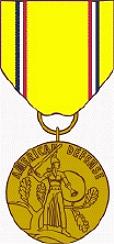
American Defense Medal
|
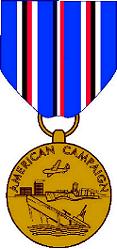
American Campaign Medal
|
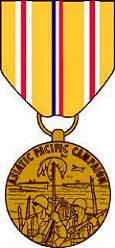
Asiatic Pacific Medal
With Eight (8) Battle Stars
|
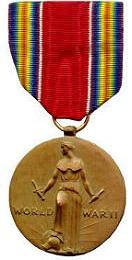
World War II Victory Medal
|


